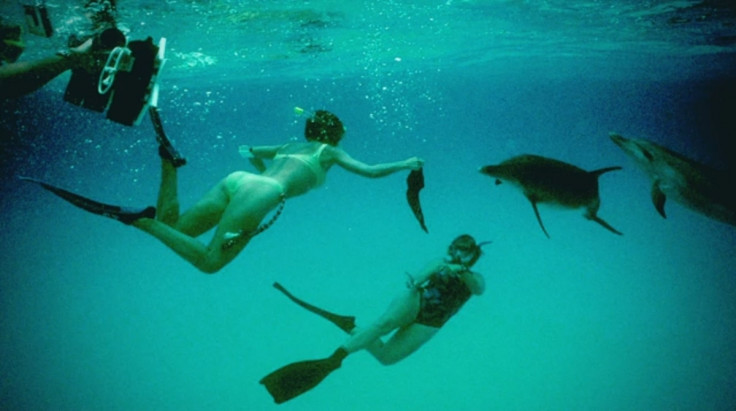Dolphin-to-English Two-Way Translator World First on its Way

Scientists expect to be chatting with dolphins this summer after researchers developed a computer program that analyses dolphin whistles and translates them into English.
Dolphins are sociable animals with large brains. They demonstrate self-awareness and use tools such as sponges to hunt for food. Each dolphin makes a signature whistle and they also use tight bursts of eco-location clicking noises to communicate.
Denise Herzing, director of the Wild Dolphin Project has spent 28 years living and tracking three generations of a pod of Atlantic spotted dolphins in the Bahamas to study their behaviours and family relationships, hoping to "crack the code" of what dolphins talk about.
Together with Dr Thad Starner, the technical lead researching Google Glass at the Georgia Institute of Technology, the researchers have created the Cetacean Hearing and Telemetry (CHAT), the world's first prototype dolphin translator.
Cracking the code
CHAT is a small underwater keyboard fitted to the arm of a diver. It has four symbols which correspond to four artificial whistle sounds that researchers have taught the dolphins to mimic. Each sound represents an item the dolphins like to play with, such as seaweed, rope or a scarf.
By pressing a button on the keyboard, the diver can activate a sound through an underwater speaker.
Two underwater microphones called hydrophones pick up sounds made by dolphins and translate them so that the diver can understand what each sound means.
In late August 2013, Herzing was able to hear and understand a dolphin playing around her boat, saying the word "sargassum", which means seaweed.
"I was like whoa! We have a match. I was stunned," said Herzing.
During another experiment with a larger keyboard that had to be pushed through the water, Herzing played with a rope toy in the water.
When she dropped the rope, the dolphins swam over and picked it up. They played with the rope for a while, but when Herzing pressed the rope sound on the keyboard to request for them to give the rope back to her, the dolphins swam over and dropped the rope next to her.
Analysing dolphins' sounds
Over the years, Herzing and her team have built up a video database of the dolphins playing, living, courting, fighting and communicating with each other.
Since 2011, they have digitised the database and used it to collect data on all the different whistle sounds they make, many of which the human ear cannot hear, since dolphins' whistles are on frequencies up to 200 kilohertz, which is 10 times higher than the highest pitch a human can hear.
Starner took the database of dolphin whistles, together with Herzing's voice recordings of the words in English, and built CHAT with a team of Georgia Tech graduate students.
So far, the sargassum whistle has only been heard once, and whistles are different to the other noises dolphins make, but the researchers have been able to make some progress on processing features in dolphin whistles.
Herzing and Starner have managed to pinpoint eight different dolphin communication characteristics from a sample of 73 whistles, which match with mother and calf dolphin interactions.
Their research is still in its preliminary stages, but this year, researchers hope to confirm two-way communication between humans and dolphins.
They will be presenting their research at the International Conference on Acoustics, Speech, and Signal Processing in Florence this May.
© Copyright IBTimes 2025. All rights reserved.






















